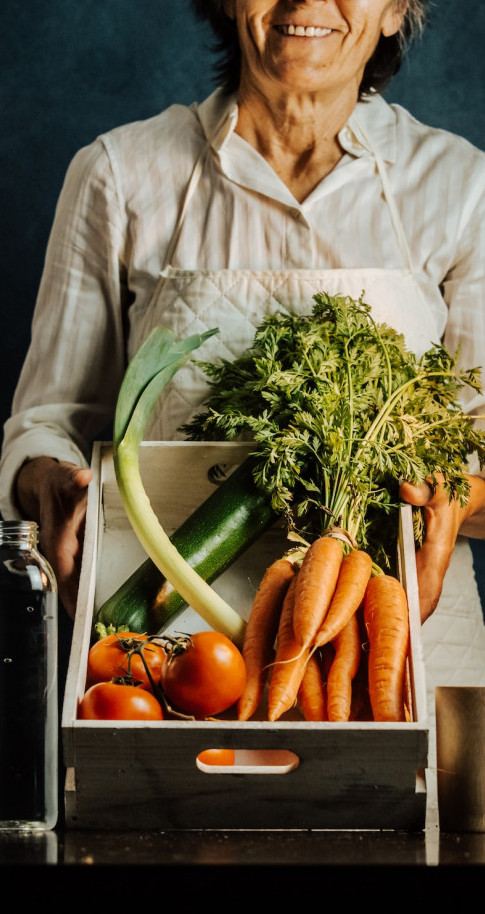Ever Heard of a kitchen tool called Mandolin?
Vegetable Chopper Called Mandolin: Uses, Tips, Brand Names, Safety Issues
A vegetable chopper called mandolin (or mandolin) is a kitchen tool that can help you slice, julienne, or shred various fruits and vegetables with ease and precision. It consists of a flat surface with one or more sharp blades that can be adjusted to different thicknesses and shapes. A mandolin can save you time and effort in preparing salads, gratins, chips, coleslaw, and more.
How to Use a Mandolin
To use a mandolin, you need to follow these steps:
- Choose the blade and thickness that suit your recipe. Some mandolins have interchangeable blades that can be attached or detached, while others have built-in blades that can be rotated or slid into place. You can also adjust the thickness of the slices by moving a knob or a dial on the side of the mandolin.
- Wash and trim your fruits or vegetables. Cut off any stems, ends, or peels that might interfere with the slicing process. You may also need to cut your produce into smaller pieces to fit the width of the mandolin.
- Place your produce on the mandolin and hold it with a hand guard or a food holder. This is a plastic device with spikes that grip the food and protect your fingers from the blade. Do not use your bare hand to push the food across the blade, as this can result in serious injuries.
- Slide your produce back and forth over the blade with a smooth and steady motion. Apply gentle pressure and avoid jerking or twisting the food. Collect the slices in a bowl or a plate underneath the mandolin.
- Clean your mandolin after each use. Carefully wipe the blade with a damp cloth or a brush and rinse the rest of the mandolin with warm water and soap. Dry it thoroughly before storing it away.
Tips for Using a Mandolin
Here are some tips to help you get the most out of your mandolin:
- Use firm and fresh fruits and vegetables for better results. Avoid soft, mushy, or overripe produce that might clog or damage the blade.
- Cut your produce evenly and uniformly to ensure consistent slices. Use a knife to create flat surfaces on round or irregular-shaped produce.
- Use a cutting board or a mat under your mandolin to prevent it from slipping or scratching your counter top. Some models have rubber feet or suction cups for extra stability.
- Wear cut-resistant gloves or use a thick kitchen towel to protect your hand from accidental cuts. Always use the hand guard or the food holder when slicing.
- Sharpen your blade regularly to maintain its performance and quality. You can use a knife sharpener or a honing rod to do this.
- Store your mandolin in a safe place away from children and pets. Keep the blade covered or wrapped when not in use.
Brand Names of Mandolins
There are many brands of mandolins available on the market, each with its own features, advantages, and disadvantages. Here are some of the most popular and reputable ones:
- Swissmar Borner: This is one of the best overall mandolins according to Food Network1. It has a slim design, multiple blades, adjustable thickness levels, and a storage caddy for safety.
- Kyocera: This is one of the best value mandolins according to Good Housekeeping2. It has a ceramic blade that stays sharp longer, an ergonomic handle, and four thickness settings.
- Mueller: This is one of the most versatile mandolins according to Good Housekeeping2. It has five blades that can slice, julienne, grate, or shred, an easy-to-use knob for thickness adjustment, and a large container for catching the slices.
- Benriner: This is one of the best mandolins for professionals according to Good Housekeeping2. It has a stainless steel blade that can cut paper-thin slices, a freely adjustable dial for thickness control, and three optional attachments for different cuts.
- OXO: This is one of the best mandolins for beginners according to Good Housekeeping2. It has a V-shaped blade that can handle any type of produce, four thickness settings with clear indicators, and a spring-loaded food holder that moves up and down automatically.

Safety Issues of Mandolins
Mandolins are very useful tools, but they can also be very dangerous if not used properly. The main safety issue of mandolins is the risk of cutting yourself with the sharp blade. According to The Spruce Eats3, you should always use a hand guard or a food holder when slicing with a mandolin, as this will prevent your fingers from coming into contact with the blade.
Another safety issue of mandolins is the possibility of contaminating your food with bacteria or dirt from the blade. You should always wash your mandolin before and after each use, and sanitize it regularly with a mild bleach solution or vinegar. You should also avoid using the same blade for different types of produce, especially raw meat, poultry, or seafood.
A third safety issue of mandolins is the potential of damaging your blade or your produce with improper use or storage. You should always cut your produce with the grain, not against it, to avoid tearing or bruising it. You should also store your blade in a protective case or cover, and keep it away from moisture, heat, or direct sunlight.
Mandolins are great tools for slicing fruits and vegetables with ease and precision. They can help you create beautiful and delicious dishes in less time and effort. However, you should also be aware of the uses, tips, brand names, and safety issues of mandolins, and follow the best practices ensuring a safe and enjoyable experience.
<
I personally use a mandolin I got from Amazon. Price is o.k and works beautifully.
